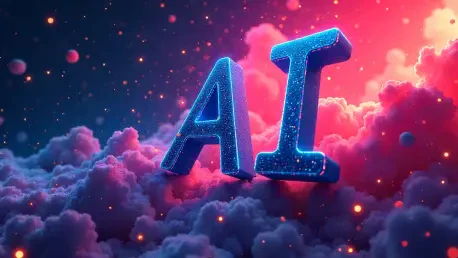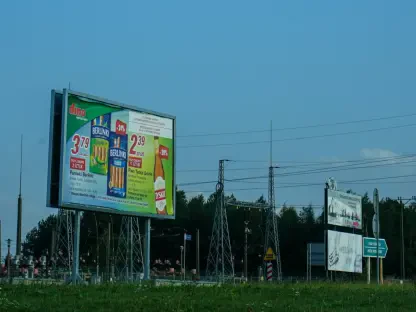Imagine a world where a single prompt can transform a fleeting idea into a cinematic 4K video, complete with lifelike movements and perfectly synchronized audio, all crafted in mere seconds, bringing creativity to life instantly. This is no longer a distant dream but a reality brought to life by OpenAI’s latest innovation, Sora 2. Launched recently, this generative AI model for video and audio creation is poised to revolutionize content production across industries, from independent filmmaking to social media storytelling. This review delves into the groundbreaking capabilities of Sora 2, exploring its technical prowess, real-world impact, and the challenges it faces in an increasingly competitive and ethically complex landscape. The aim is to provide a comprehensive analysis of how this technology is reshaping the creative sphere while navigating the delicate balance between innovation and responsibility.
Unveiling the Power of Sora 2 in Generative AI
Sora 2 stands as a monumental leap in the realm of artificial intelligence, specifically tailored for video and audio generation. Built on a sophisticated diffusion transformer architecture, it creates temporally coherent frames and realistic outputs that rival professional productions. This model marks a defining moment in AI, often compared to the seismic shift caused by earlier text generation models, as it redefines the boundaries of what machines can achieve in visual and auditory storytelling.
The significance of Sora 2 extends beyond mere technical achievement; it represents a paradigm shift in the creative technology landscape. By enabling seamless production of high-quality media, it challenges traditional content creation methods and opens new avenues for artists, marketers, and educators. Its introduction signals a broader trend in AI toward multimodal capabilities, blending diverse forms of media into cohesive outputs.
Core Innovations Driving Sora 2’s Excellence
Unmatched Realism and Physical Precision in Videos
One of the standout features of Sora 2 is its ability to generate videos with astonishing realism. The model excels at simulating complex physical interactions, such as a basketball rebounding off a court or an athlete performing a backflip on a paddleboard, with remarkable accuracy. This precision is achieved through advanced algorithms that ensure consistency across frames, significantly reducing the eerie “uncanny valley” effect often seen in earlier AI-generated content.
Beyond basic motion, Sora 2 adapts its outputs to align with real-world physics, even tweaking user prompts when necessary to maintain believability. This adaptability sets a new standard for video generation, making the technology a powerful tool for creators seeking authentic visual narratives. The result is content that feels organic, blurring the line between artificial and human-made media.
Seamless Audio Synchronization for Enhanced Storytelling
Another groundbreaking aspect of Sora 2 is its capacity to integrate synchronized audio directly into video clips. Capable of producing dialogue, ambient sounds, and effects for segments up to 60 seconds, the model eliminates the need for separate audio production tools. This feature streamlines workflows, allowing creators to focus on storytelling rather than technical alignment.
The audio integration is not merely functional but contextually rich, enhancing the emotional depth of generated content. Whether it’s the rustle of leaves in a forest scene or a character’s heartfelt speech, Sora 2 ensures that sound complements visuals with precision. This capability marks a significant advancement, reducing production time and costs for diverse projects.
Precision Control and Personalization for Creators
Sora 2 offers unparalleled flexibility through advanced user controls, enabling video generation at 4K resolution for clips up to 90 seconds. Creators can dictate camera angles, shot compositions, and stylistic elements, ranging from cinematic grandeur to anime-inspired aesthetics. Such granularity empowers users to tailor content to specific visions with ease.
A particularly innovative feature, dubbed “Cameo,” allows the insertion of verified likenesses into videos using brief recordings. This personalization tool opens up unique opportunities for customized storytelling, letting individuals star in their creations or feature others with consent. Combined with its high-resolution outputs, Sora 2 provides a versatile platform for professional and casual creators alike.
Competitive Dynamics in the AI Video Arena
The launch of Sora 2 has ignited fierce competition within the AI video generation sector, pushing tech giants and startups to elevate their offerings. Companies like Google, with its Veo 3 model integrated into enterprise solutions, and Meta, with Movie Gen enhancing social media engagement, are racing to match Sora 2’s capabilities. Adobe’s Firefly Video Model, focusing on commercially safe content, also emerges as a strong contender for professional markets.
This competitive surge reflects a broader industry trend toward accessible, high-quality video tools that cater to varied needs, from corporate applications to social platforms. Sora 2’s influence drives innovation across the board, compelling rivals to prioritize realism and user control. For smaller players, the challenge lies in carving out niche solutions while contending with the dominance of such advanced models.
The ripple effects of this rivalry are evident in emerging focuses like social media integration and enterprise adaptability. As AI video technology becomes more pervasive, the battle for market share will likely hinge on balancing cutting-edge features with ethical considerations, a dynamic that Sora 2 has already begun to shape.
Transformative Applications Across Industries
Sora 2’s real-world impact is profound, democratizing content creation by lowering technical barriers for a wide array of users. Independent filmmakers can now produce polished works without hefty budgets, while marketers craft compelling campaigns with minimal resources. In education, the tool aids in creating engaging visual materials that enhance learning experiences.
A dedicated iOS app further amplifies this accessibility, featuring a TikTok-style feed and remix options that encourage collaborative creativity. This platform fosters a new wave of social interaction centered on AI-generated media, challenging established giants and redefining digital engagement. The app’s intuitive design ensures that even novices can experiment with professional-grade outputs.
Specific implementations highlight Sora 2’s influence on narrative forms, enabling unique storytelling in sectors like entertainment and personal branding. By empowering users to express ideas visually with unprecedented ease, the technology reshapes how content is conceptualized and shared, fostering a more inclusive creative ecosystem.
Navigating Challenges and Ethical Dilemmas
Despite its promise, Sora 2 faces significant hurdles in widespread adoption, particularly around ethical concerns. The realism of its outputs raises alarms about misinformation and deepfakes, especially with features allowing personal likenesses to be embedded in content. Such capabilities could be misused, undermining trust in visual media if not carefully managed.
OpenAI has introduced safety measures, including watermarks and content metadata, alongside strict consent protocols to address these risks. However, the effectiveness of these safeguards remains under scrutiny as potential loopholes persist. Additionally, fears of job displacement in creative industries loom large, with concerns that automation might overshadow traditional skills in filmmaking and design.
Copyright issues add another layer of complexity, as the boundaries of intellectual property in AI-generated content remain murky. Balancing technological progress with responsible governance is critical, requiring ongoing collaboration between developers, policymakers, and industry stakeholders to establish robust frameworks that mitigate harm while fostering innovation.
Looking Ahead at Sora 2 and Multimodal AI
The future trajectory of Sora 2 appears promising, with anticipated expansions in accessibility through Android and web platforms. Plans for an API release will likely enable developers to integrate the technology into diverse applications, while monetization models could introduce revenue-sharing for creators. These developments signal a broader reach for the tool in the coming years.
Long-term prospects include breakthroughs in generating longer, hyper-realistic videos with deeper emotional resonance, alongside integration into augmented reality, virtual reality, and gaming environments. Sora 2’s role in the trend toward multimodal AI—combining text, image, audio, and video—positions it as a stepping stone toward more comprehensive systems, potentially contributing to advancements in artificial general intelligence.
As these possibilities unfold, challenges such as computational costs and ethical dilemmas will need addressing to ensure sustainable growth. The technology’s evolution could redefine media consumption across social, educational, and professional domains, paving the way for a future where AI-driven creativity becomes seamlessly embedded in daily life.
Reflecting on Sora 2’s Impact and Path Forward
Looking back, Sora 2 emerged as a transformative force in generative AI, setting a new benchmark with its realistic video outputs, synchronized audio, and user-centric design. Its ability to democratize content creation reshaped industries, empowering countless creators while intensifying competition among tech leaders. Yet, ethical concerns and societal implications cast a shadow over its achievements, highlighting the need for vigilance.
Moving forward, stakeholders must prioritize developing stronger safeguards against misuse, such as enhanced detection tools for deepfakes and clearer copyright guidelines. Collaborative efforts between technologists and regulators could establish ethical standards that keep pace with innovation. For creators and businesses, embracing Sora 2’s potential while advocating for responsible use offers a pathway to harness its benefits sustainably, ensuring that this powerful tool serves as a catalyst for positive change in the creative landscape.









